13 April 2021
![]() 7 mins Read
7 mins Read

Sure, it might sound a bit whimsical but the Australian coastline is home to a number of beautiful lighthouses that you can stay in. And, if you visit between May and November, you may just see those magical mammals pass by your accommodation. Here are our favourite picks.
Located near the township of Eden and perched on the edge of a peninsula, there are three beautifully restored keeper’s cottages, with open fireplaces and charming nautical decor. Along with a fully equipped kitchen and dining and lounge rooms, each cottage has a cosy verandah, ideal for enjoying the sea air and whale watching.
You can take a guided tour of the lightstation and walk part of the Light to Light walk in Ben Boyd National Park – a stunning coastal multi-day walk between historic Boyds Tower and Green Cape Lightstation. It’s one of the best walks on the Far South Coast of NSW with ever-changing views from coast to lush forest.
These award-winning Assistant Lighthouse Keeper’s Cottages in Cape Byron Conservation Area are perfect for a getaway with family or friends. Just a short drive or half-hour walk from Byron, the lovingly restored cottages boast an almost panoramic view that takes in golden beaches, dramatic coastline and the iconic lighthouse, not to mention making it a superb spot for whale-watching.
You can spend the day swimming and relaxing, exploring the Cape Byron State Conservation Area, or if you’re feeling more adventurous there’s great diving and snorkelling, surfing, hang gliding and kayaking.
Although popular with visitors during the day, when the sun goes down you’ll have the area all to yourself. Sunrise over the ocean is a spectacular sight and well worth waking up for, at least once during your stay!
Ever dreamt of being cast away on a deserted island? Despite being just nine kilometres from Narooma on the Far South Coast, Montague Island Nature Reserve has all the makings of a remote isle.
The sweetest spot for a romantic escape, you can wake up to the sounds of crashing waves and catch the magnificent views as the sun rises over the ocean from the historic Lighthouse Keeper’s cottage. It’s also a haven for nature lovers: follow Montague Island walking track to explore this unique landscape that preserves habitat for more than 90 species of seabirds, whales and dolphins, and hundreds of seals who laze on the rocks from late winter to early December.
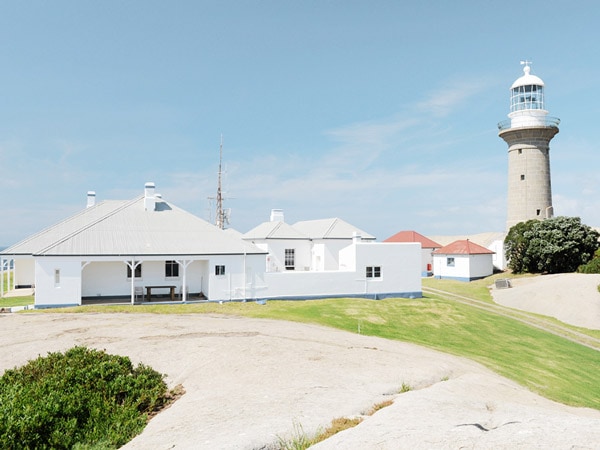
Wake up to the sounds of crashing waves on your own remote island at Montague Island Nature Reserve. (Image: Montague Island Lighthouse Keepers’ Cottages)
Nestled in the quaint fishing village of Seal Rocks, this beautifully restored self-contained cottage (circa 1875) is a remarkable spot to explore a landscape of coast, bushland and lakes, and embrace a rich cultural history in timber-getting, fishing and maritime. The delightfully named Sugarloaf Point Lighthouse is unique in its architecture for being one of only two in Australia with an external stairway.
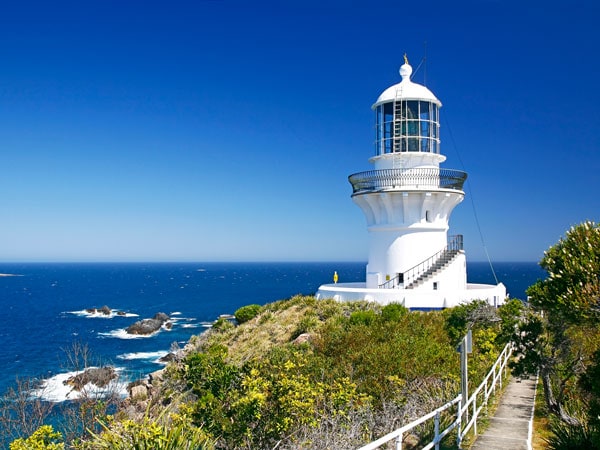
Check into one of the historic lighthouse keepers’ cottages nestled in the shadow of Sugarloaf Point Lighthouse.
Home to more than 40 kilometres of beaches and the state’s largest coastal lake system, Myall Lakes National Park has countless opportunities for being active in the great outdoors. Busy yourself canoeing and kayaking, boating, fishing, surfing, snorkelling, or diving in the pristine waters. On land, there are a number of beautiful nature trails to follow, and be sure to check out the Grandis, a 76-metre-high flooded gum – one of the tallest trees in the state. You’ll find it in the Grandis picnic area north east of Bulahdelah.
By day, marvel at migrating whales from the cottage verandah and by night, when the lighthouse beams, you’ll be mesmerised by clear star-filled skies.
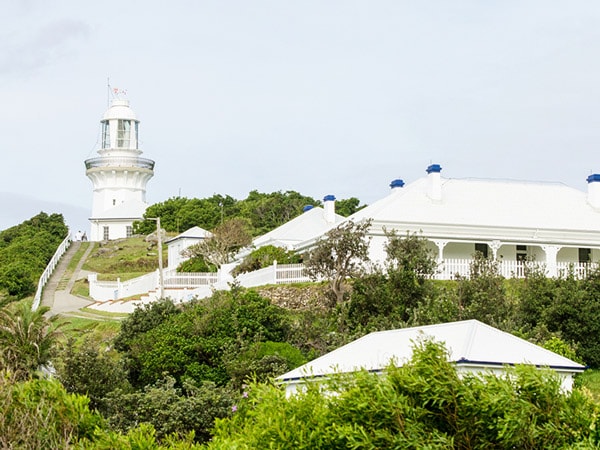
Check into one of the historic lighthouse keepers’ cottages nestled in the shadow of Sugarloaf Point Lighthouse.
Perched high on a headland in the beautiful Hat Head National Park on the Mid North Coast, Smoky Cape is the most elevated lighthouse on the east coast, completely surrounded by natural bushland with sweeping coastal views.
The historic Head Lighthouse Keeper’s Cottage has been carefully restored and converted into a two-bedroom bed and breakfast with private bathroom, and the two Assistant Lighthouse Keeper’s Cottages are best suited for families with self-catering facilities.
History buffs will appreciate the area’s connection to Captain Cook’s historic voyage in 1770, the lighthouse’s use during World War II for military operations, and the area’s significance to its traditional owners, the Dunghutti people.
With rainforest and wetlands, Hat Head National Park is a terrific place to go bushwalking, camping or to enjoy a quiet picnic. Birdwatchers can look for black swans and spoonbills in the park’s wetlands; hawks and eagles soaring above beach cliffs; and shorebirds like curlews and plovers around the beach. And, of course, those magnificent whales can be spotted from your front door.
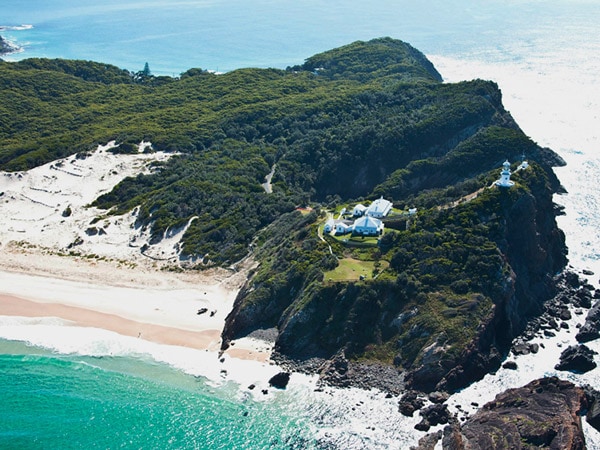
Smoky Cape is the most elevated lighthouse on the east coast of NSW.(Image: Smoky Cape Lighthouse Keepers’ Cottages/John Spencer)
At the tip of a rocky outcrop that juts into the Spencer Gulf, this heritage-listed landmark in Whyalla on the Eyre Peninsula attracts photographers, history buffs and those looking to catch one of its epic sunsets. Its two rustic lighthouse keepers’ cottages are available for groups to hire, providing peace, quiet and views out to the lighthouse and back towards the southern Flinders Ranges.
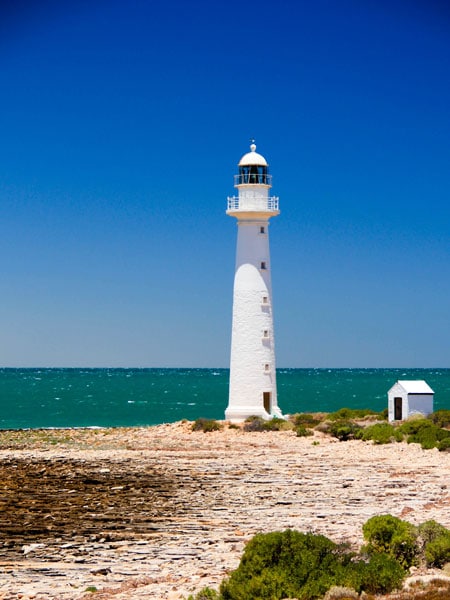
Stay at Point Lowly Lighthouse in Whyalla on the Eyre Peninsula in SA.
This long and slender limestone sentinel located at the highest point of Western Australia’s Wadjemup (Rottnest Island), a quick ferry ride from Perth, occupies the same site as the state’s first stone lighthouse, built in 1849 by Aboriginal prisoners. Its current incarnation is noted not only for being the country’s fourth tallest but also for having its first rotating beam. Take a guided tour with a volunteer for historical insight and fantastic views from the top.

Take a guided tour with a volunteer of Wadjemup Lighthouse on WA’s
Wadjemup (Rottnest Island).
Still a vital working lighthouse in Aireys Inlet on Victoria’s Shipwreck Coast, Split Point Lighthouse – with its distinctive red cap – is affectionately known as the White Queen. But perhaps most importantly for anyone who grew up in the ’90s, this is the lighthouse from the popular kids’ TV show Round the Twist. Make a pit stop on your Great Ocean Road drive to climb to the top for stunning coastal views.
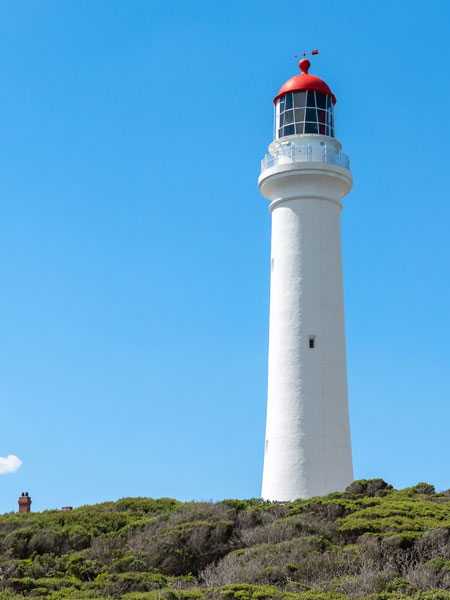
Split Point Lighthouse is the lighthouse
from the popular kids’ TV show Round the
Twist.
Head to Low Head at the mouth of the Tamar River on Tasmania’s north coast, 40 minutes north of Launceston, for noon on a Sunday to hear the resonant moan of a foghorn that will make you feel like you’ve skipped back a century. Installed in 1929 and decommissioned in 1973, the foghorn was restored in the early 2000s by volunteers and today is the only operational G-type diaphone in the world. It sits next to the cheery red-and-white lighthouse that looks out over the wild Bass Strait and forms part of the Low Head Pilot Station precinct, the oldest of its kind in Australia, which dates back to 1805.
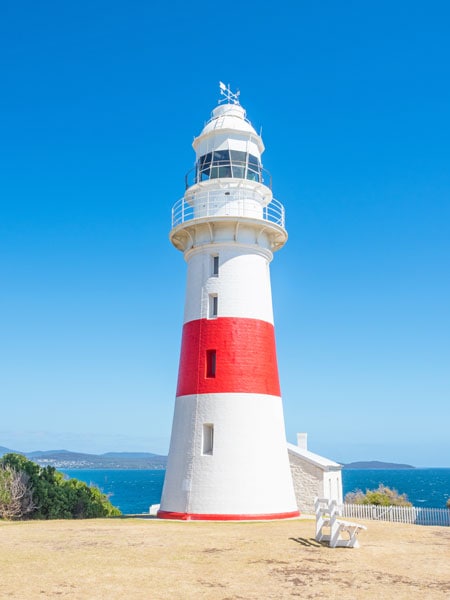
Low Head Lighthouse is located at the mouth of the Tamar River on Tasmania’s north coast.
LEAVE YOUR COMMENT